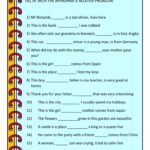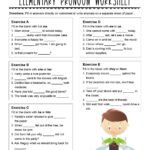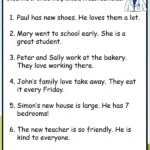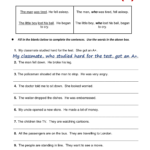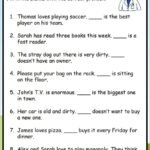Relative Clauses Worksheets
Relative clauses are a type of clause that provide additional information about a noun in a sentence. They are introduced by relative pronouns such as “who,” “which,” or “that.” Relative clauses can be a bit tricky to understand at first, but with practice, they become easier to use correctly.
What are Relative Clauses?
Relative clauses are groups of words that act as adjectives. They provide more information about a noun or pronoun in a sentence. For example, in the sentence “The book that I bought is on the table,” the relative clause “that I bought” describes the noun “book” and tells us which book we are talking about.
Types of Relative Clauses
There are two main types of relative clauses: defining and non-defining.
Defining relative clauses provide essential information about the noun they modify. They cannot be removed from the sentence without changing its meaning. For example, in the sentence “The girl who is wearing a red dress is my sister,” the relative clause “who is wearing a red dress” defines which girl we are talking about.
Non-defining relative clauses provide additional, but not essential, information about the noun they modify. They are separated from the rest of the sentence by commas and can be removed without changing the sentence’s meaning. For example, in the sentence “My dog, which is very friendly, loves to play fetch,” the relative clause “which is very friendly” provides extra information about the dog, but it is not necessary for understanding the main point of the sentence.
Using Relative Clauses
To use relative clauses correctly, it’s important to pay attention to the relative pronoun used and the word order within the clause. The relative pronoun used depends on the noun being described and its relationship to the main clause.
For people, we use “who” or “that.” For example, “The man who is talking to your mother is my uncle.”
For things, we use “which” or “that.” For example, “The car that is parked outside is mine.”
For both people and things, we can use “whose” to show possession. For example, “The girl whose phone was stolen reported it to the police.”
It’s important to note that “that” can be used for both defining and non-defining relative clauses, while “who,” “which,” and “whose” are only used for non-defining clauses.
Practicing Relative Clauses
To practice using relative clauses, you can find worksheets online or create your own. These worksheets usually provide sentences with missing relative clauses, and you have to fill in the correct relative pronoun or phrase. This helps reinforce your understanding of how relative clauses work and how to use them accurately.
By regularly practicing relative clauses, you can improve your writing and speaking skills, as they add descriptive details and make your sentences more interesting.
Relative Clauses
RELATIVE CLAUSES English ESL Worksheets Pdf Doc
Relative Clause Exercise
Relative Clauses Worksheet With Answers
Relative Clauses Exercises
DEFINING RELATIVE CLAUSES
Relative Clauses Worksheets
Relative Clause English ESL Worksheets Pdf Doc










